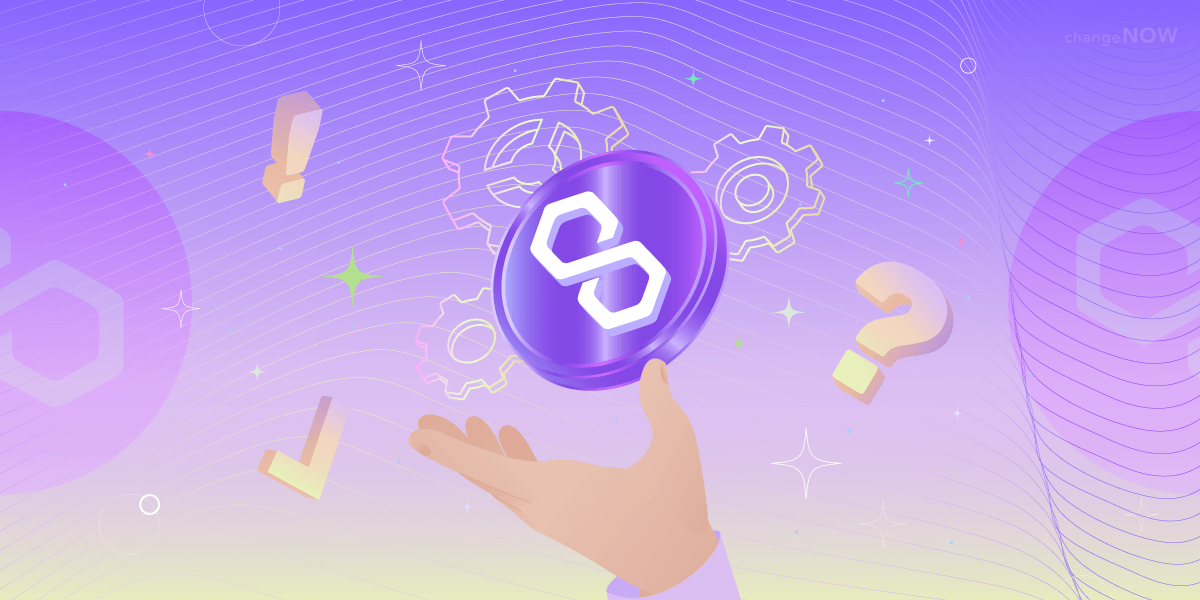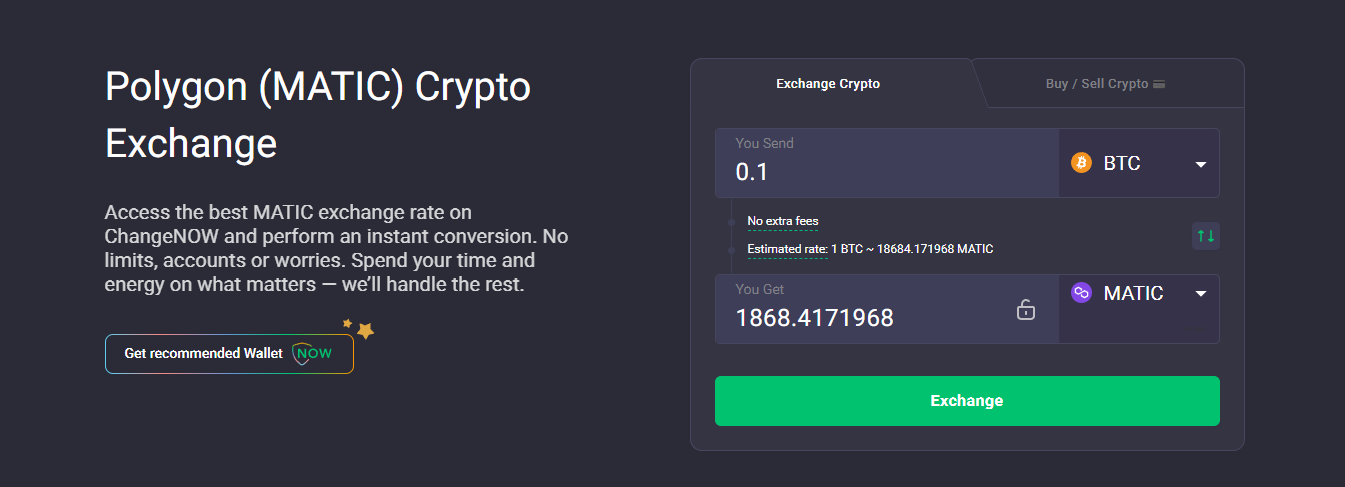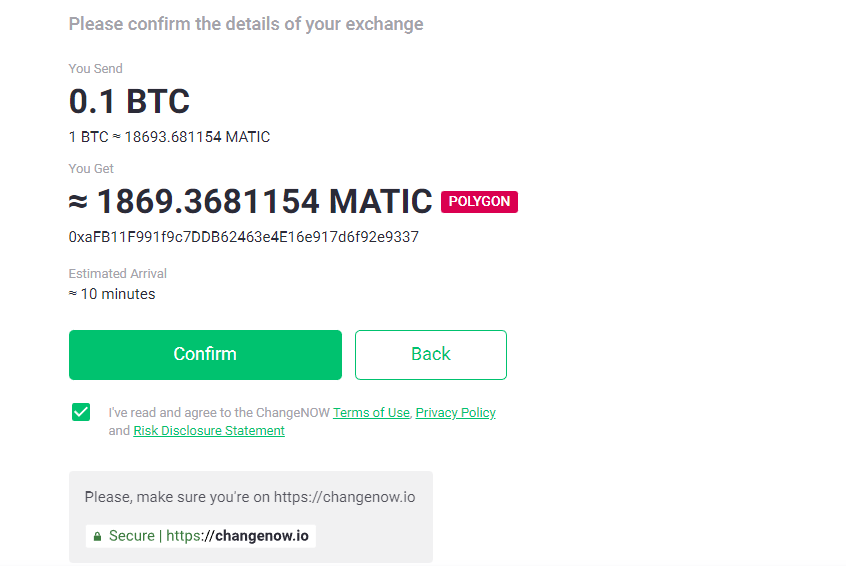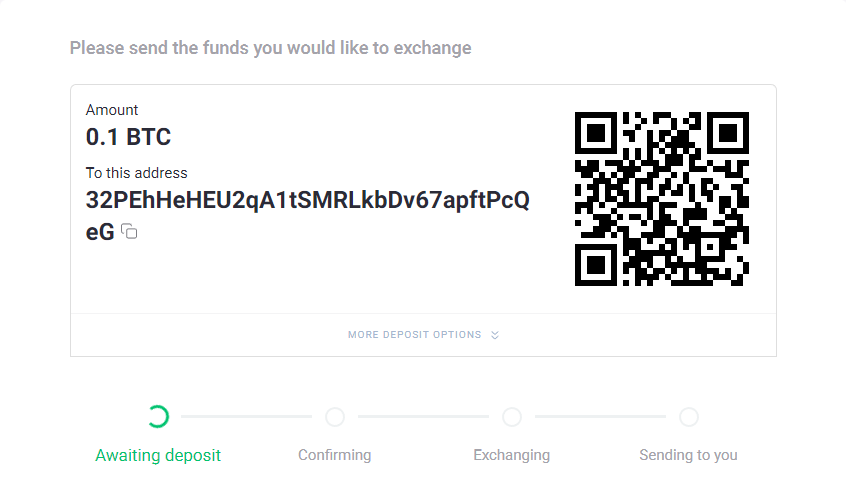What is Polygon (MATIC) and How Does It Work
Polygon is a blockchain that operates on the proof-of-stake consensus model, and MATIC is the native token of this blockchain. It's one of many blockchains out there but has some unique characteristics that set it apart.
What is Polygon?
Polygon is a proof-of-stake blockchain that was founded in 2017 by four Indian software engineers to improve on some aspects of the popular Ethereum blockchain.
Proof-of-stake means that transactions on the blockchain are verified by dedicated validators that stake their tokens on the blockchain. It doesn’t rely on computers solving complex mathematical equations to verify transactions, i.e., proof-of-work.
The Polygon blockchain is actually built on top of the Ethereum blockchain, it operates as a “sidechain”. It offers faster transaction speeds and lower fees than the Ethereum blockchain, which is why it has gained a considerable number of users since its launch in 2017.

What is MATIC?
MATIC is the Polygon blockchain’s native token. It is used to govern and secure the Polygon blockchain and pay transaction fees to the network. You can buy MATIC tokens on a centralized exchange like ChangeNOW or stake existing tokens on the Polygon blockchain and earn more as a reward.
MATIC holders can vote on important decisions concerning the Polygon blockchain, e.g, fees and burn rate. There are currently 8.7 billion MATIC tokens in circulation out of a maximum supply of 10 billion. The token has a total market capitalization of over $6 billion, according to CoinMarketCap.
How Does Polygon (MATIC) Work?
The Polygon blockchain is made up of three different layers with specific functions:
- The Ethereum Layer
Ethereum is the base blockchain upon which Polygon is built. The Polygon chain activates the proof-of-stake consensus mechanism by staking contracts on the Ethereum blockchain. The staking contracts include the following features:
- Any user can become a validator by staking MATIC tokens on the Ethereum mainnet.
- Validators earn rewards – a percentage of transaction fees paid to the blockchain – for their service.
- Users can save checkpoint transactions on the Ethereum mainnet.
- Heimdall Layer
The Heimdall layer includes a collection of nodes that run in parallel to the Ethereum mainnet. These nodes monitor the staking contracts deployed on the Ethereum layer and also monitor network checkpoints. The Heimdall layer is based on the Tendermint blockchain.
- Bor Layer
The Bor layer includes a collection of nodes responsible for accumulating transactions into blocks – it's the block producer for the Polygon sidechain. The Bor layer is built on the Go-Ethereum (Geth) client.
How to Use Polygon Network
Follow these steps to use the Polygon network:
- Download the NOW Wallet by heading to this link; https://www.walletnow.app. It’s a non-custodial wallet available on both desktop and mobile devices.
- Select the Buy/Sell crypto tab and choose MATIC, or find MATIC on the Wallets tab and click the Buy button.
- Choose the fiat currency you want to buy MATIC with and enter your card details. After paying, you’ll receive the equivalent of the fiat amount in MATIC tokens in your wallet within five minutes.
- Now, you have MATIC in your NOW wallet. You can store, send, receive, or swap it for other tokens directly from the app.
Polygon vs. Ethereum
Ethereum is a “Layer 1” blockchain, while Polygon is a “Layer 2” blockchain built atop Ethereum. Ethereum is the most popular blockchain globally, with over 500,000 active addresses. The total number of transactions on Ethereum exceeded the number of transactions on the Bitcoin blockchain for the first time in 2021.
Polygon is a scaling solution to Ethereum. It solves the problem of Ethereum having high gas fees by bundling transactions together. Gas fees on Polygon are measured in pennies, while Ethereum gas fees are measured in dollars.
Polygon is a much faster blockchain than Ethereum. It can handle up to 65,000 transactions per second, whereas Ethereum tops out at 17 transactions per second. In summary, Polygon gives you the features of the Ethereum blockchain but with much faster transaction speeds and lower fees.
How to Buy Polygon (MATIC)?
- Head to the MATIC token exchange page. Select the currency (crypto or fiat) that you’ll like to buy MATIC tokens with. ChangeNOW will show you an estimated rate, including the transaction fees. Confirm it and click** Exchange**.

- You’ll be redirected to another webpage showing the details of the transaction. Check the details and enter your Polygon wallet address. If the details are right, click Next.

- Click Confirm on the next page.

- Make a deposit to the address that ChangeNOW provides. If the deposit is successful, you’ll receive the equivalent MATIC tokens in the Polygon wallet address you provided.

FAQ
Polygon vs. MATIC: What’s the Difference?
Polygon is the blockchain and MATIC is the native token of the blockchain. MATIC is just one of many tokens that you can use to transact on the Polygon blockchain. Polygon is the blockchain network while MATIC is the token that governs the network.
Is Polygon a “Layer 2”?
Yes, Polygon is a “Layer 2” blockchain built on the Ethereum blockchain.
Is Polygon (MATIC) an ERC-20 token?
Yes, MATIC is an ERC-20 token compatible with other Ethereum-based tokens.
Is Polygon Proof-of-Stake?
Yes, Polygon operates on the proof-of-stake consensus mechanism.
Is Polygon Decentralized?
Yes, there is no centralized entity governing the Polygon network. It’s governed by holders of the MATIC token.
Is Polygon Built On Ethereum?
Yes, Polygon is built on the Ethereum blockchain.
Is Polygon a Blockchain?
Yes, Polygon is a blockchain albeit a secondary one built atop another blockchain.
You might also like to read How to Mine Zcoin How to Buy Kishu Inu Coin Jasmy Price Prediction
